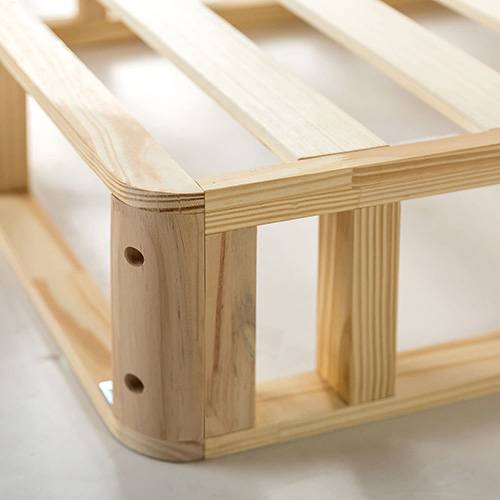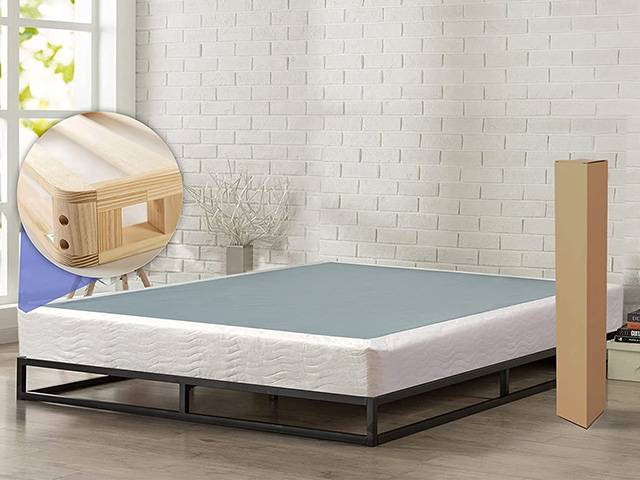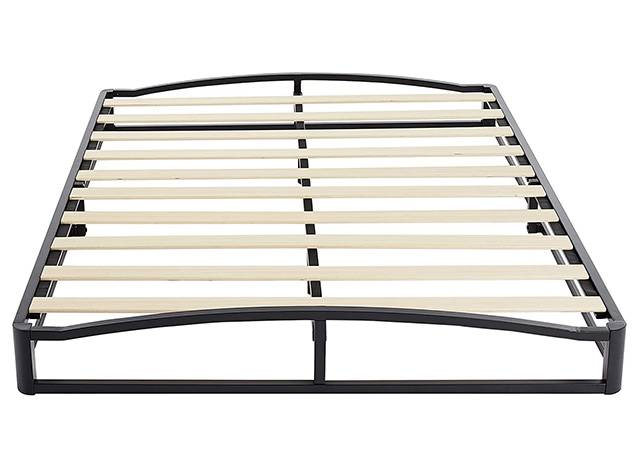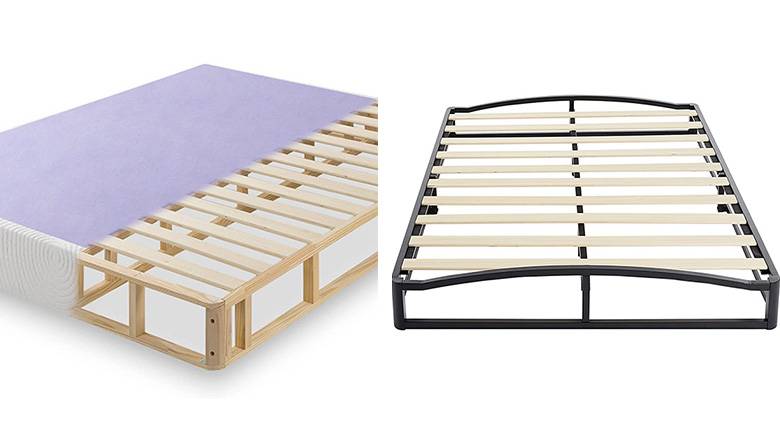A lot of people overlook the fact that in order to get the best comfort out of their mattress, they need the proper frame and support for it. Faced with many choices, such as innerspring, hybrid, and foam mattress designs- you need to take into account the reasons why you purchased the mattress in the first place. Putting a mattress on the wrong support can change the way it feels, and could result in an uncomfortable sleep experience.
Although many basic platform bed frames will properly support any mattress you own, they may leave something to be desired- and also provide a low profile that isn’t conducive to either your decor, or height. That’s where understanding the difference between a box spring and a foundation comes in handy. These mattress supports are designed to work with your mattress to provide the height, and support you need.
Box Spring
A box spring is a wooden frame that contains a series of supportive springs that you can place your mattress on. It is designed to provide the proper give and weight distribution to take full advantage of the mattress comfort you have chosen.
Box springs used to come standard with innerspring mattresses, and bed frames were created to accept the height of the box spring and mattress. With the introduction of a foam mattress, it became obvious that the box spring would not provide the support the softer foam required, and so more and more bed frames offer a platform style base to accommodate any type of mattress. This has made the box spring slighting obsolete, however they are still incredibly conducive for proper innerspring bed support. Plus, they help raise your mattress to a more comfortable height- something that is often lacking with a platform frame.
| Pros | Cons |
|
|
— Construction

— Benefits
Made specifically to work with innerspring and some hybrid mattress styles, the overall design enhances a supportive feel and can even work to isolate movement. They also are incredibly effective in helping to circulate air under and around your mattress, which is especially important in more humid climates. This can also work towards supporting a better sleep.

— Concerns
The biggest drawback of a box spring is the fact that it isn’t a good choice for foam mattresses or hybrid mattresses that have a foam base. This is because the softer foundation of the mattress will sink into the box spring and not work as intended. It also will likely change the feel of your mattress and void the warranty.
Mattress Foundation
A mattress foundation takes the box spring concept, and removes the coiled innerspring. They are designed more to provide height and support, rather than enhance the comfort or work with the mattress for added comfort.

| Pros | Cons |
|
|
— Construction
Described above, these are a basic wooden frame that is styled after the box spring. They boast both horizontal and vertical support and then are covered in a durable fabric to sit under your mattress and keep it supported. Slats are usually only 2 to 4 inches apart in order to accommodate foam foundations that require the flatter surface.
— Design
The design is more to add height to your bed, provide good mattress support, and they can work to help distribute weight as well depending on how it is built. They can also work to firm up the overall feel of the mattress if you are in need of that type of support.
— Benefits
Overall, a foundation provides a firm, even support and can work with any mattress- taking away worries of warranty issues. They are durable, can give new life to old mattresses, prevents sagging, and helps get your mattress in a more comfortable position.
Like a box spring, they also help circulate air, and can help keep your mattress refreshed and avoid a build up of moisture that can result in mold and mildew growth.
— Concerns
They are heavy and awkward, and can be difficult to get into place. Plus, they could create unwanted firmness and pressure point problems. Since they cost extra, it might be a waste of money if you find it to be a poor choice for your personal comfort.
Your Best Choice Explained
Obviously, you need to first choose the option that is compatible with your mattress type and also offers the comfort support you desire. Box springs work great with innerspring and many hybrid designs, but will wear out eventually. Foundations work well with anything, but is more or less a way to help raise your overall bed height, and perhaps add air circulation into the bedroom equation.
| Box Spring | Foundation |
|
|


